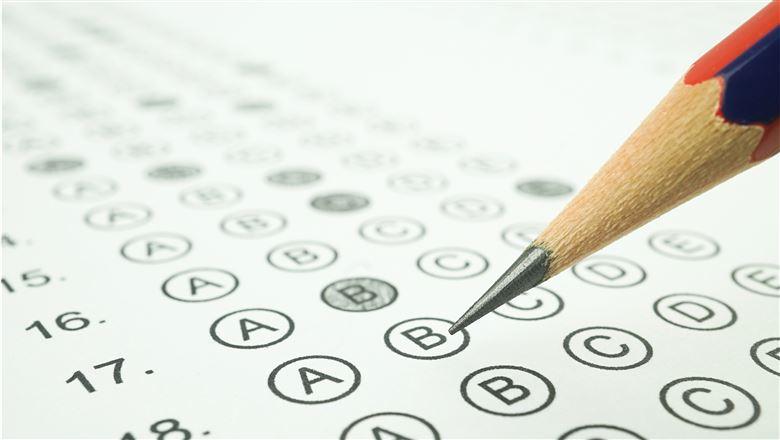Joshua A.R. Aldort
Joshua A.R. Aldort is an attorney at McAndrews, Held & Malloy, Ltd., in Chicago.

Under newly codified regulations, associations and other organizations that create secure tests can now obtain copyright registration not only for their exams but also for individual test items. This new option provides a powerful new weapon against infringement.
Like other organizations that create content, associations use copyrights to protect material they have worked hard to create, including their standardized tests or certification exams. Recent changes in U.S. copyright regulations provide standardized test owners with a new weapon to protect their secure tests—those that are not disclosed to the world at large—and test questions.
One significant change is that the law now permits secure test owners to register secure test items as a group, rather than registering exam forms. Under this approach, the copyright registration applies separately to each test item, rather than the test items being a component of the copyrighted exam form. The new regulation simplifies the burden of proving copyright infringement because a plaintiff need only show that a defendant copied one test item to prevail in a lawsuit. It also has the potential to significantly increase statutory damages awards because damages are determined on a “per-infringement” basis.
People use copyrights to protect their original works. A copyright affords its owner the exclusive right to reproduce a work, prepare derivative works, and distribute and publicly sell copies of the work for a limited period of time.
For a work to qualify for copyright protection, the author or authors must have independently created the original work, and it must possess at least some minimal degree of creativity. The vast majority of works satisfy the minimal-degree-of-creativity test, as they possess some creative spark, no matter how crude, humble, or obvious it might be. However, copyrights do not protect facts, ideas, and commonly used systems, names, short phrases, slogans, or methods.
A copyright automatically exists in the work upon its creation once it is “fixed”—in other words, in a sufficiently permanent state to be perceived, reproduced, or communicated. However, to stop the unauthorized use or copying of the work, a copyright owner should register the copyright with the U.S. Copyright Office. The benefits of obtaining a copyright registration include:
In short, registering a copyright provides its owner with additional legal options when the owner must confront an infringer.
Only a small percentage of tests qualify as “secure tests.” The U.S. Copyright Office defines a secure test as “a non-marketed test administered under supervision at specified centers where test takers are assembled on scheduled dates, and where all copies of the test are accounted for and either destroyed or returned to restricted locked storage following each administration.” (The Copyright Office considers a test to be non-marketed if the copies are not sold but instead are distributed and used in such a manner that the test sponsor or publisher retains ownership and control of the copies.)
Additionally, “secure test items” are the specific test questions and associated answer options created for use in a secure test.
Conversely, tests and test items are not secure if they are not kept confidential. Secure tests and test items are akin to trade secrets, in that to maintain their special status, they must not be disclosed to the world at large.
The new regulation simplifies the burden of proving copyright infringement because a plaintiff need only show that a defendant copied one test item to prevail in a lawsuit.
Until recent regulatory changes, obtaining a copyright registration for a secure test or group of secure test items presented a logistical problem: The Copyright Office required that each application include two copies of the original work, and ordinarily, the registered work is deposited with the Copyright Office and available for public inspection. However, public disclosure of test items can destroy the validity of a secure test.
To remedy this quandary, the Copyright Office has waived its traditional deposit requirement and instead allows applicants to deposit redacted copies of secure tests and secure test items. The process for obtaining a copyright registration is as follows:
Recently, the Copyright Office formalized rules that allow applicants to include a large number of test items in one application if all of the items are used in the same secure test. These requirements must also be met:
While the Copyright Office’s new rules are intended to improve the registration process, they were not well received by many industry stakeholders, and many important questions remain unresolved. One issue involves inconsistent determinations on whether test questions are creative enough to qualify for copyright protection. Another concern is the lack of a clear appeal process for rejected test questions, and some organizations have bemoaned the increased time and cost to register secure tests and test questions.
For a test owner to stop the unauthorized use or copying of a test or group of test items, it may become necessary to file a copyright infringement lawsuit. To be successful, the plaintiff must prove ownership of a valid copyright and unauthorized copying by the defendant.
Ownership is typically established by producing a certificate of registration. Unauthorized copying is established either by direct proof that the defendant copied the work or by indirect proof that the defendant had access to the copyrighted material and that the copyrighted material and the allegedly infringing material are substantially similar.
Thus far, there have been no cases where an award for statutory damages was based on copyright infringement of a group of secure test questions, so it is still unclear how the courts will determine infringement and damage awards under the new options for group registration. That said, the new regulation provides test owners with significant new leverage over alleged infringers when protecting secure tests and test items.